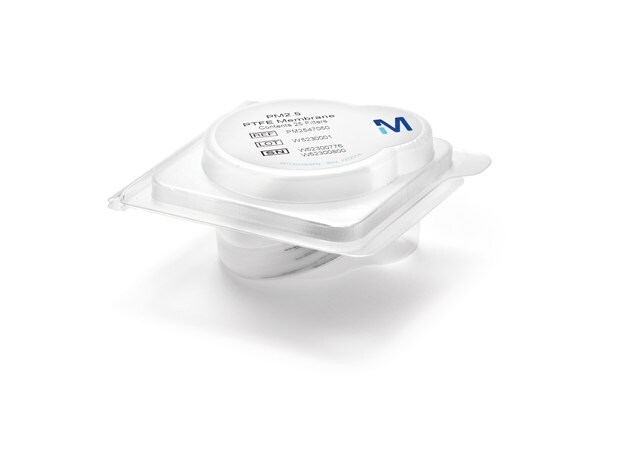Air Monitoring Filters
Air monitoring methods were developed to detect diverse particulate matter and contaminants that have been emitted into the air. These particulates, such as PM2.5 and PM10, can cause devastating health and environmental effects. Millipore® particulate matter filters can be used in regulated ambient air monitoring methods, including monitoring particle levels.
What are PM2.5 Particles?
Particulate matter 2.5 (PM2.5) is defined by the EPA as fine particulate matter with diameters less than or equal to 2.5 micrometers, or particles that can only be seen with an electron microscope. These particles can be emitted from locations such as construction sites, smokestacks, fires, power plants, industries, and vehicles.
PM2.5 Health Effects
Small particles can permeate easily, so the health hazards associated particulate matter increase as particle size decreases. PM2.5 emissions pose negative health effects such as heart attacks, irregular heartbeat, and heart failure, lung cancer, aggravated asthma, impaired lung function. These emissions are also linked to age-related disorders such as Alzheimer’s disease and bone damage.
PM2.5 Environmental Effects
PM2.5 emissions are responsible for detrimental environmental effects such as natural water acidification, nutrient depletion in soil and water, plant and crop damage, and eco system destabilization. These environmental effects also often manifest through reduced visibility and hazy air conditions.
PM2.5 Filters and Monitoring
Air quality standards are being implemented across the globe, driven by the EPA, NIOSH, OSHA, and ASTM, to monitor and control for PM2.5. EPA Method 201A and NIOSH 0500 are among the most relevant and utilized methods employed.

Filter Regulatory Specifications
Millipore® filters match regulatory specifications.
Certification documents for each product will be shipped in each box.
Detailed test results can be obtained by contacting Technical Support.
*(As Per Chinese PM2.5 Sampling Standard)
**Certification documents for each product, stating that all tests were carried out according to United States Environmental Protection Agency (EPA) requirements, will be shipped in each box.
The characteristics of PM2.5 filters were tested as per 40 CFR Part 50, Appendix L.
XRF background signal of PM2.5 filters
What is PM10?
Particulate matter 10 (PM10) is a class of airborne particulates 10 µm and smaller. PM10 is emitted from industry, construction, landfills, power generation, agriculture, heating systems, and the crushing or grinding of materials. It can also be emitted from environmental factors, such as mold and pollen, and can include dust, smoke, soot, metal particles, acids, and salt.
PM10 Health Effects
Airborne particulates 10 µm and smaller have been linked to negative effects on our breathing and respiratory systems. PM10 has been known to cause detrimental health effects such as impaired lung function, aggravated asthma, lung cancer, and chronic obstructive pulmonary disease. It is also linked to heart issues and failure, birth complications and defects.
PM10 Filters and Monitoring
We provide filter media that is designed for PM10 testing that complies with government-established standards. Air quality standards, driven by the EPA, NIOSH, OSHA, and ASTM, are being implemented across the globe to monitor and control for PM10. EPA Method 201A and NIOSH 0500 are among the most relevant and utilized methods employed. Millipore® fibrous disc filters are available in a wide range of flow rates and throughput capacities. Glass fiber filters are available with or without binder resins, and can be sterilized by ethylene oxide, gamma irradiation, or autoclave (121 °C at 1 bar).
Glass Fiber Filters with Binder Resin
Millipore® glass fiber membranes with binder resin (Type AP20) exhibit less weight loss and minimal particle shedding. They also exhibit lower fine particle retention and higher dirt-holding capacity than PTFE filters.”
Quartz Fiber Filters
Millipore® quartz fiber filters (Type AQFA) are made of very pure quartz fibers with no glass fibers or binders. The pure quartz composition prevents the filters from reacting with acidic gases, unlike glass fiber filters that can react and cause false readings. This makes quartz filters well suited for measuring heavy metal concentrations and small amounts of particles (such as the USEPA PM10 ambient air monitoring method). The filters also exhibit good weight and form stability.
To continue reading please sign in or create an account.
Don't Have An Account?